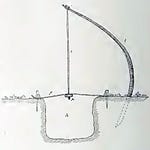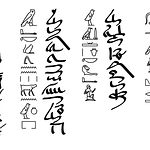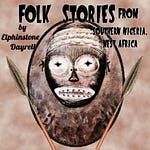"Gods,
Ancestors,
Guardians,
Beings of the wild.
The leather bottles
say we should perform,
because of the scorpions sting,
because of suicide,
aches in the belly,
pains in the head.
The elder brother slept badly.
He took out some guinea corn
and hurried along to the diviner
who poured out his bag then said:
let's grasp the stick.”
(White Bagre, 1 - 20)
It is hard to explain the Bagre Myth without an immersion into what the Dagaaba people believe: the rhythms of their lives, their hopes, dreams and fears, and their understanding of the world in which the theater of their existence plays out. The Bagre itself is a collection of orature (encompassing folktales, myths, rituals, parables, riddles, proverbs, songs, dance, mime, history, panegyric, and the arts) and basic scientific knowledge – essentially a liberal education curriculum. At its core, it is a story about a man (the elder brother) who, after being plagued by troublesome dreams, illnesses and events, sought the counsel of a diviner. Their ensuing dialogues, the diviners prescriptions, and subsequent events and revelations outline how through knowledge of the Bagre Myth and membership in a Bagre Society, a Dagaaba person might experience more well-being and harmony, and become more knowledgeable.
Scattered throughout the lines of verse are some gems of Dagaaba philosophy, debates about the whereabouts of the Supreme Being Naangmen, explanations for communal patterns of relationships, keen observations on natural phenomena, contemplations on the mystery of life and death, and this short but very sweet exposition on Kindness:
What is Kindness?
Kindness means a good heart.
Kindness has things to give others.
Kindness loves everybody's child.
Kindness respects the weak.
(White Bagre, 4900)
Last week’s reading focused on the first seven of ten ceremonies associated with the White Bagre. Each ceremony is tied to agricultural activities in the community and animal behavior. Thus, the different ceremonies are performed as the agricultural cycle progresses or the specific animal behavior is observed. For example, the Announcement of the Bagre comes when the fruit of the shea tree is ripe. The ceremony is associated with the story of the fruit bat who, by eating the fruit and leaves, helps the people know when the fruit is ripe for harvesting.
I love the Bagre for what it represents: a way through which people come into harmonious rhythm with their natural environment and with themselves through mechanisms that make sense to them. For example, I think it is fascinating that as part of the requirements for the “Beating of the Malt” ceremony which features in this week’s episode, Bagre neophytes are expected to bring chickens to be used as food and sacrifices in the Bagre Dance. They can beg people to donate the birds or grab any they find. But they must do so without creating any conflict in the community – an exercise which teaches them daring, negotiation, and humility.
I hope you enjoy the episode!
Listen to Part 1 here
Listen to Part 3 here















The Myth of the Bagre: Part 2